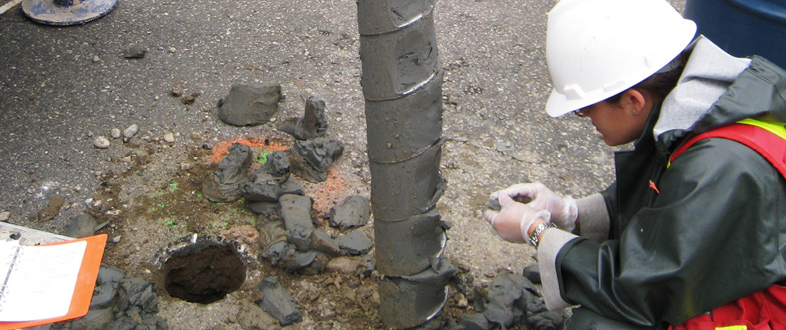
![]()
Site Assessment
Our staff is focused on providing examinations of past-and-present property activities that provide a large scope of potential future liabilities. This information is crucial for lenders and insurers.
Phase I ESA:
- A report following applicable regulatory requirements documenting the facts
- Review of Federal, Provincial, Municipal and Local records out to distances as specified by the applicable regulations
- Review municipal planning files for historic use of property and surrounding lands
- Review historic aerial photography of the vicinity
- Examine geological and topographical maps to determine land type and drainage
- On-site visit to view present conditions, hazardous substances or petroleum products usage and evidence of any likely environmental hazardous site history
- Interview with persons with knowledge regarding the property (past owners, present owners, property managers, tenants, neighbours, etc.)
Phase II ESA:
Phase II investigations are used to confirm the presence or absence of potential contaminants of concern. The purpose of a Phase II ESA is to check whether the site conditions are in compliance with environmental standards, and guidelines. Our Phase II ESA includes:
- Collection of soil, groundwater, surface water, sediment samples and samples as applicable
- Laboratory chemical analysis of samples for contaminants of concern at accredited third party laboratories
- Groundwater elevation surveying
- Collating of site-specific concentrations with regulatory criteria
- Preparation of a comprehensive factual report
Phase III ESA:
The primary objective of a Phase III ESA is to investigate the nature and extent of adverse environmental impact identified by the Phase II ESA, to determine the potential risk to human health and the environment, and if required, to develop a remedial action plan.
The key components of a Phase III ESA are:
- Delineation of identified constituents of concern in soil, sediment, or groundwater. Test pits, boreholes and monitor wells are used to obtain samples for detailed laboratory analysis.
- Calculate the volume of impacted soil and/or groundwater. Investigation to determine pathways of movement or migration of contaminants through soil and groundwater and the preparation of transport “fate and transport” and “risk assessment” models. These are designed to determine how long it will take and in what concentration a contaminant will reach a receptor.
- Notification of the appropriate regulatory body as required. Early involvement of provincial regulators can facilitate transition into remedial action and hasten closure for a contaminated site.
- Determination of site specific remedial goals (e.g. generic values or site specific values generated through a quantitative risk assessment).
- Development of feasible remedial options for consultation and approval by the client and submission of the Remedial Action Plan (Phase IV) to the regulator. The options must include consideration of physical/chemical limitations, construction requirements, environmental as well as health and safety implications, regulatory approval and public perception.

